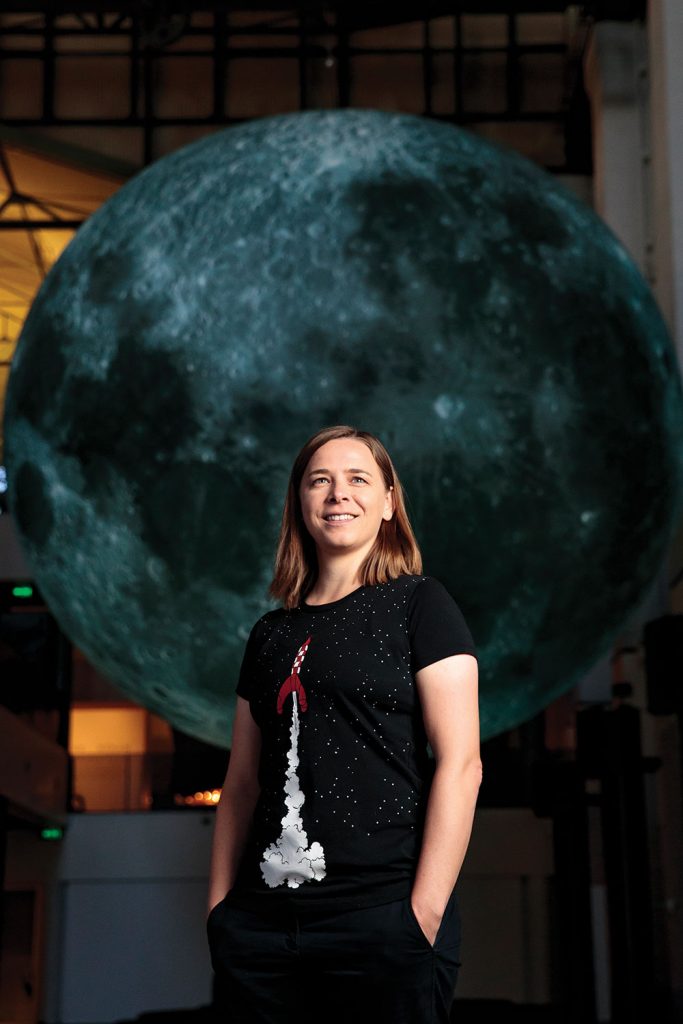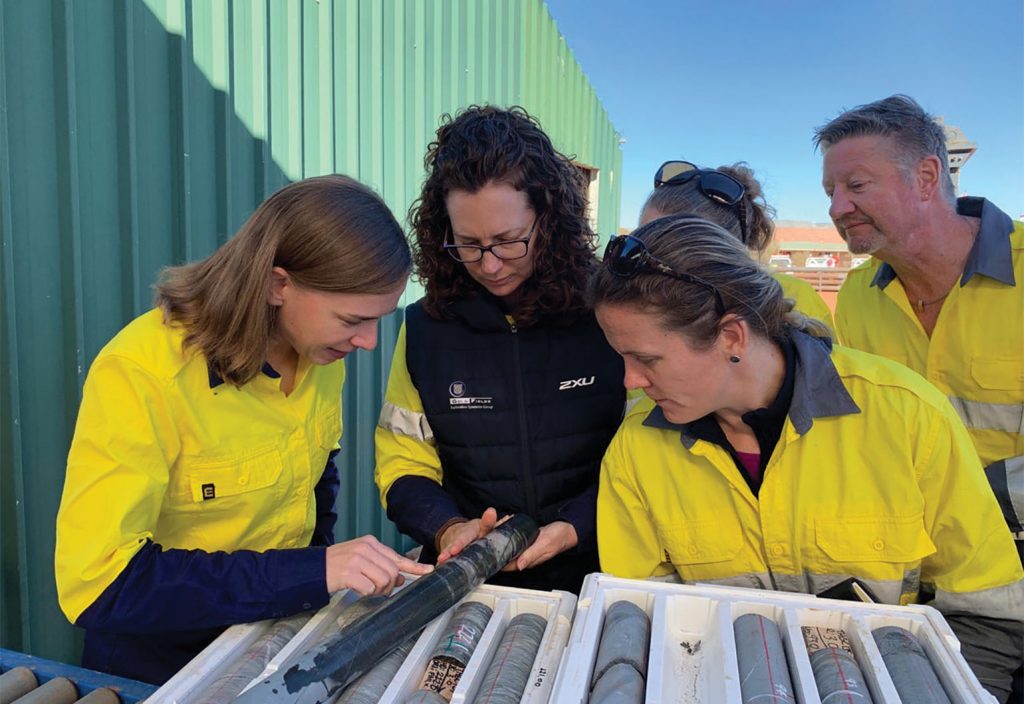Ahead of International Women in Engineering Day on 23 June, create spoke to three talented engineers overseeing the development of the profession’s next generation.
Professor Lisa Harvey-Smith faces her fair share of challenges in her role as an educator, public science communicator, astrophysicist and Australian Government Women in STEM Ambassador.
Comprehending the size and scope of the issues causing a lack of women in STEM careers is itself a daunting task.

And the seemingly endless series of commitments and presentations to rooms full of adults, university students and schoolchildren can be exhausting.
But there’s nothing she’d rather been doing than helping nurture the next generation of engineers.
“In my role there are some things that are challenging and draining,” Harvey-Smith told create. “But there is also a lot that is highly energising, and most of the energising things involve young people.”
“When you shift the perspective of someone, especially a young person, and you see their eyes light up, you can see the cogs whirr in their head as they gain a piece of knowledge, a new perspective or a new possibility.”
At that moment, Harvey-Smith said, she genuinely feels she may have changed that person’s life.
“That’s an incredible feeling and it gives me shivers,” she said.
“It’s endlessly rewarding. That’s where I want to be and that’s what keeps me happy.”
It’s an attitude that is not unusual among those who oversee the education of future engineers, a cohort that will be responsible for developing innovative solutions to truly global challenges.
These educators have masterminded a process of constant change that has meant the experience of earning an engineering degree just a decade ago has substantially changed today. Most importantly, they have a powerful appreciation of the value of their work in providing the engineering profession with another generation of superstars.
“I have the best job in the world,” said Engineers Australia Fellow and Chartered engineer Elizabeth Croft FIEAust CPEng, Dean of the Monash University Faculty of Engineering, and Professor in the departments of Mechanical and Aerospace Engineering and Electrical and Computer Systems Engineering.
“There is nothing I could do that would be more effective in helping society succeed — bringing great jobs, great prosperity and helping people achieve their potential … What other profession can make such a difference?”
Learning from the best
Engineers Australia Honorary Fellow Professor Ana Deletic HonFIEAust, Dean of the Faculty of Engineering at Queensland University of Technology, has always worked in academia. However, her research now has a direct effect on the way engineers are implementing nature-based water technologies into urban design.
Engineers implementing biofiltration and rain garden solutions, whether they know it or not, likely use system designs influenced by the work of Deletic and her team.
“Around the lower Yarra in Melbourne they installed systems using our principles and guidelines,” she said.
“We have also exported technology to Israel, to China and Singapore. When they launched the first pilot in Israel, the New South Wales Minister of Water made a speech saying this was the first time he’d ever heard of water technology from Australia being imported into Israel.”
In 1995, Deletic began her first job in academia, at the University of Aberdeen, which is more than 500 years old. She was the first woman to lecture in the College of Engineering. Back then, she recalled, engineering education was all about hardcore science-of-engineering skills: maths and physics.
“These days,” she said, “we’re producing graduates who are a lot more rounded.”
That means plenty of training and experience around working in a team, leadership and problem solving, but also communication and presentation skills.
“These are all very important for any engineer working in a firm or on any project team,” she said.
“This means work experience is also a lot more important, including, when possible, exchanges abroad to see how things work elsewhere.
“It’s about broader experience and exposure to things other than pure engineering skills. I believe it is very good for students to have these experiences. My daughter just started working for Google after graduating with a Chemical Engineering and Commerce degree. I looked at her CV and the most important and impressive parts were internships and exchanges abroad.”
Rip it up and start again
The level of strategic thinking and innovation that has gone into engineering education is astounding, Croft said.
Over the scope of her career, Croft has been involved in, and personally designed, courses and course upgrades that have experienced enormous success in terms of student competencies and industry feedback.
“Back in the late 1990s, when I was an assistant professor, we created one of the first mechatronics degrees at the University of British Columbia,” she said. “Following that, in 2005, we launched the Mech 2 program, a fully integrated, second-year mechanical engineering program that won the American Society of Mechanical Engineering 2006 Curriculum Innovation Award.”
For these developments and more, Croft said, she tore the old curriculum to pieces and started again, from scratch.
“We began with maximising student learning,” she said. “How do we deliver just-in-time learning? How do we connect what students are learning in lectures with what they’re designing and building? How do we change the order of the classes so the learning of the mechanics, dynamics, circuits or mathematics links flawlessly with lab work?”
This approach had powerful effects on learning outcomes, she said. More recent developments include programs integrating ethics, business leadership, entrepreneurship, sustainability, data science and more.
“While these curriculum reforms take us part of the way, our students achieve the best outcomes when they have frequent opportunities to apply engineering theory to the real world,” Croft said. “This is why we must provide students with more opportunities to engage with industry throughout their education.”
Croft predicts cooperative education and engineering doctorates will lead the next wave of engineering education innovation in Australia.
The end result will be an enviable depth of education and experience for today’s engineering students and graduates.
Women must be on board
A great deal of brainpower is determining how to attract more women into engineering degrees at Australian universities.
Why is this important? Beyond the principle of gender equality, why is it vital that more women are in engineering, from the lecture hall to the boardroom?
Actually, Harvey-Smith said, the imperative doesn’t come from an equality standpoint, but rather an end-user one.
“When products and infrastructure are designed by a narrow group of people who have a particular worldview and a particular set of experiences, the end product doesn’t serve the people who are going to use it,” she said.
“For that reason, we must diversify. Design is never neutral. The cohort that is designing our world — and that’s what engineers do — is designing the future. The legacy of what is built is very important to the success of our society.”
A more equal future
How can we ensure more women join the next generation of engineers? That’s the problem the Engineering for Australia Taskforce is working on. Taskforce Chair Jane MacMaster FIEAust CPEng, Chief Engineer at Engineers Australia, explains.
“When it comes to why more women are not entering engineering degrees, we don’t categorically know. The taskforce’s priority is to understand not just why women are not applying, but why women do decide to study engineering.
Some think we need to encourage females to study science and mathematics from a very young age.
Others point to the fact that there are systemic and intrinsic biases that result in young girls feeling they’re not good at maths. This could be because of the way maths is taught. Maths has an incredible ability to help us understand how the world works, but often it’s taught in an abstract way.
Then there’s the fact that the meaning of ‘engineering’ is being lost in sciences and STEM. I recently heard a 40-minute speech about the importance of emerging technology and innovation for the future of Australia. The entire speech was about engineering, but the word ‘engineering’ was only used once.
We need conversations that point to engineering specifically: why it’s different and why it’s
exciting. For that, we might need to look at the influencers of young people — parents, carers, role models, careers advisors, etc. — who help drive decisions young women are making.
Our efforts and research are looking into what sorts of programs work to encourage females to study engineering and why. Once we have that information, we’ll scale it up.”
